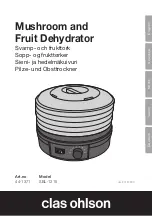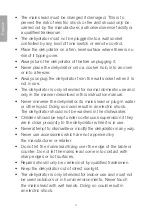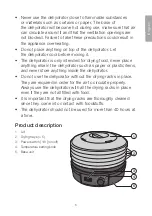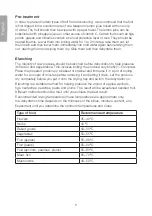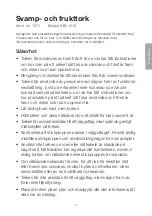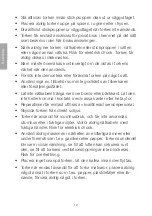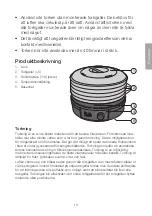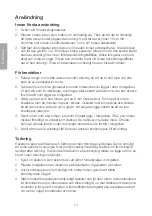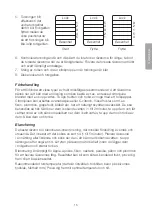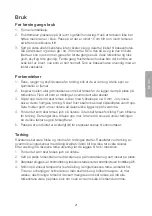
8
English
Pre-treatment
In order to prevent certain types of fruit from discolouring, we recommend that the fruit
is first dipped into a solution made of one teaspoon lemon juice mixed with one cup
of water. The fruit should then be wiped with a paper towel. The lemon juice can be
substituted with pineapple juice or other source of vitamin C. Certain fruits such as figs,
plums, grapes and bilberries contain a natural protective layer of wax. They should be
treated like this: Lower them into boiling water for 1 to 2 minutes, take them out, let
them drain and then lower them immediately into cold water again before taking them
out, draining them and wiping them dry. Slice them and then dehydrate them.
Blanching
The majority of raw produce should be blanched before dehydration to help preserve
its flavour and appearance. This involves boiling the produce very briefly (1–5 minutes).
Place the prepared produce in a basket or strainer and immerse it in a pot of boiling
water for a couple of minutes before removing it and letting it drain. Let the produce
dry completely before you put it onto the drying tray and switch the dehydrator on.
Blanching is a suitable method for helping preserve the colour of apples, apricots,
figs, nectarines, peaches, pears and plums. The result will be sweetened candied fruit.
Different methods should be tried until you achieve the best result.
Recommended drying temperature (these temperatures are approximate only,
the dehydration time depends on the thickness of the slices, moisture content, etc.)
Experiment until you determine the optimum temperatures and times.
Type of food
Recommended temperature
Flowers
35–40 ºC
Herbs
40 ºC
Baked goods
40–50 ºC
Vegetables
50–55 ºC
Fruit (apples)
55–60 ºC
Fruit (pears)
55–60 ºC
Fruit (apricots, peaches, plums)
55–60 ºC
Meat, fish
65–70 ºC
Mushrooms
40–50 ºC
Содержание SBL-1215
Страница 2: ...2...

